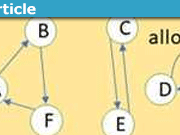Explore The Vacuum Fluctuation Myth in Quantum Theory
This Insight Article is a sequel of the Insight Articles ”The Physics of Virtual Particles” and “Misconceptions about Virtual Particles“ which make precise what a virtual particle is and what being real means, document some of the liberties taken in physics textbooks in the use of this concept, and mention the most prominent misuses. A further Insight Article, ”Vacuum Fluctuations in Experimental Practice”, shows the example of a recent article in the scientific literature how some authors claim the observation of vacuum fluctuations, justified only by superficial, invalid reasoning.
In short, the concept of virtual particles is well-defined and useful when restricted to its use in Feynman diagrams and associated technical discussions. But it is highly misleading when used to argue about vacuum fluctuations as if these were processes happening in space and time. The latter is a frequent misunderstanding, a myth that has not the slightest basis in particle physics. (The proper meaning of some terms related to the vacuum is explained at the end of ”The Physics of Virtual Particles”.)
The two articles mentioned do not, however, explain how it is possible that this misunderstanding is so widespread, and even serious experts resort to misleading imagery when explaining the subject to the general public. This is answered here at the example of Steve Carlip’s page on Hawkings radiation, where Steve Carlip, a well-known theoretical physicist working on quantum gravity, gave a lucid but completely mythical narrative about how to vacuum fluctuations create Hawking radiation. This vacuum fluctuation myth comes from taking pieces of intuition and connecting them with a plausible narrative. The following is a reconstruction of the sort of thoughts that combine to justify the myth in the eyes of those who use this language. (For those interested, a non-mythical description of Hawking radiation is given by Sabine Hossenfelder here.)
The starting point is the sound knowledge that there are technical notions of vacuum fluctuations (= nonzero vacuum expectation values), virtual particles (=internal lines in a Feynman diagram), and that in bare quantum field theory with a cutoff, the vacuum is a complicated multiparticle state depending on the cutoff – though in a way that it diverges when the cutoff is removed, so that nothing physical remains. Then the question arises: is there anything about it to convey a bit of this to ordinary people? It is highly unsatisfactory not to be able to talk about what one is doing in one’s research…
So one goes for analogies and images. Already calling internal lines ”virtual particles” is a step in this direction. Allow yourself a little more liberty and combine it with Feynman’s classical absorber theory of radiation; after all, Feynman also invented the diagrams bearing his name, possibly even inspired by this analogy. The lines defining the virtual particles look like world lines in a classical process, so why not interpret them (in one’s imagination) as the quantum remnants of the classical world lines of Feynman’s earlier (later abandoned) theory? This happy accident makes the story possible. It is not completely accurate but plausible (in the absence of correction of the intuition by mathematical formulas) because both classical particles and virtual particles are represented pictorially by lines, and it is something that ordinary people can imagine. This is the beginning of the myth. An extra reassurance that you are on a good path is that the arrows that physicists draw on their diagrams (to indicate the sign of conserved quantum numbers) happen to match Feynman’s classical idea that antiparticles are just particles moving backward in time.
To bring in more physics one has to be able to interpret complete Feynman diagrams. Tree diagrams are easy but bring in a new aspect. They talk about real and virtual particles. On an electron line containing two vertices, the electron changes its status from being real (external) to being virtual (internal) and back (external) again. We learn from it a new fact – a virtual particle can become real, and conversely. The interpretation as world lines teaches us other things: A single Feynman diagram should in fact be considered just as a tiny snapshot of an extended web containing all particles in the universe; after all, world lines do not begin and end nowhere. Thus ”in reality” (meaning in the simplified virtual reality painted for the general public) all particles should be viewed as virtual until they are observed (where they obviously are real). This matches a version of the Copenhagen interpretation: Unobserved particles have a sort of ghost existence since properties emerge only when they are subjected to quantum measurement. You are pleased by this coincidence – it seems to say that there is a coherent story to be told. Also, since most of the lines in the Feynman diagram end, you have a layman’s picture for decaying particles: What you see in a bubble chamber is just a Feynman diagram made visible! This is the first serious manifestation of the myth. In spite of lacking any grounding in real physics (being grounded instead in the visual analogy), you feel entitled to make this identification – it serves your final goal to make some of the intricacies of microphysics accessible to the general public. No one there will ever ask, how it can be that two virtual particles can bend as in a Feynman diagram with a loop – so that they find each other exactly at the right place and with exactly the right momentum to annihilate. Therefore such impossibilities – that would spoil the goal of giving a simplified picture of what happens – are silently swept under the carpet.
The next thing is to interpret the bare multiparticle state. It is obviously a complex superposition of bare particles. Make the next move to identify bare particles with virtual particles; after all, both are unobservable but appear in some version of the formalism. Now you have the picture of the vacuum as teeming with particles. From the form of Feynman diagrams with one or more loops, you can read off that in order to make sense of the narrative these particles have to pop in and out of existence. This is the birth of the next item in the myth. That is a superposition nothing dynamic happens is a small nuisance that you happily sacrifice in order to be understandable to your intended audience. After all, you can now give an illusion of having conveyed something of the complexities of the naive perturbative approach without having to talk about perturbation theory. In addition, without asking for it, you have found an unexpected visual interpretation of the notion of a vacuum fluctuation: A teeming vacuum where particles constantly pop in and out of existence clearly fluctuates, and every single act of popping may rightfully be regarded as a fluctuation of the vacuum. Another piece of the myth has found its place. Never mind that there is not the slightest way of justifying this analogy on the level of mathematical formulas. What counts is how the picture appeals to the general public, and it is obvious that drastic simplifications are needed to achieve this goal.
Now one needs to worry about the basic principles of physics in all this. After all, one doesn’t want to talk about particles alone but conveys some general physics as well. Let us bring in conservation laws. Everyone knows that energy is conserved in Nature. But wait, doesn’t the creation of particles require some energy? Don’t mind, quantum mechanics comes to the rescue. People will have heard of the Heisenberg uncertainty relation, and if they haven’t this is an opportunity to make your audience acquainted with it. It states the intrinsic uncertainty of position and momentum in nonrelativistic mechanics. What does it tell about energy conservation? Nothing at all, but analogy comes to the rescue. In relativistic physics, time is the 4th coordinate of position, and energy the 4th coordinate of momentum. Thus we don’t make a big blunder if we consider a time-energy uncertainty relation. (Though time is nowhere in mainstream physics an operator observable.) Uncertain energy can be liberally interpreted as a slightly inaccurate conservation law. After all, one can derive from quantum mechanics only that the expectation of the energy operator is conserved. Expectation brings to mind that whatever you measure inaccurately must be measured many times for getting an improved accuracy. Thus only the average energy needs to be conserved. Reinterpret the average (in the service of simplifying the physics to give your audience a coherent story) as an average in time.
Thus you found the solution: Energy can be borrowed for a short period of time if it is returned on average. The next item of the myth arrived. Now you are quite confident that you’ll be able to get a full and rich story (for laymen only, so all the small blunders made can be excused) and continue to turn it into something you’ll tell in public (or write in a book). You hope that the attentive audience will not ask where the energy is borrowed from, but unfortunately, you told the story first to a colleague with an unbiased mind and he insisted on that this should be clarified first. You need to look at some more pieces of information to get the next input. Fortunately, you soon find it: The zero-point energy of a harmonic oscillator had in the past always been ignored by saying that only energy differences are observable. Maybe it is the bank from which the virtual particles lining up for popping into existence can borrow their energy. And yes – it turns out that the bare quantum field has a huge amount of zero-point energy – an infinite amount if you take the physical limit. Clearly, this must be the source – and no ordinary person will be interested to question it. Thus the final piece of the myth arrived. You are happy – it will be a really good story conveying a lot of physics while still being understandable to ordinary people.
That there is no physical mechanism for how the borrowing works is a small nuisance that (for the layman) can be ignored – after all, they want a simple story that they can believe, not a technical discussion of all the problems involved – they know that quantum mechanics is full of unresolved problems. At this point, your story is already so convincing that you don’t mind that all observable quantities also become infinite in the limit considered and that when you instead do a proper renormalization (needed to get the high accuracy predictions quantum field theory is famous for) the whole capital of the vacuum energy bank shrinks to zero!
Now the particle philosophy for the laymen is essentially complete. Only a few – to laymen imperceptible – jumps of the imagination were needed in the service of understandability. Like in a cinema, where the pictures jump in discrete steps but provide a sufficient illusion for the audience to see a continuous story. To make sure that the audience, captured by the imaginative illusion, will not take it for physical reality, and to ensure that your status as a respected scientist is preserved, you begin with a caveat (like Steve Carlip did on his page on Hawkings radiation, in the inconspicuous first line after the heading ”An Incomplete Glossary” – long forgotten at the time the reader enters the mythical narrative linked to above): ”Be warned – the explanations here are, for the most part, drastic oversimplifications, and shouldn’t be taken too literally.” But in spite of this, you can instead be sure that most of your audience will ignore this sentence said in the first few seconds in favor of the nice mental pictures that you took a whole hour to explain and make intelligible.
When Hawking discovered what was later called Hawking radiation this picture for the general public was already well entrenched. So he only had to figure out how his discovery would fit in – and it fitted well. Instead of talking about gravitational energy (not visible, hence a sort of vacuum) creating a particle-antiparticle pair one partner of which escapes there is only a small step to saying what the educated general public expects. Since the particles are not (yet) observable by the faraway observer seeing only the radiation, they must be sold according to the philosophy developed above as virtual particles created (hence vacuum fluctuations in action). Years later, when one of the particles is finally observed by the faraway observer, it becomes real as a piece of the observable Hawking radiation.
Thus if you want to summarize to lay people the Hawking effect in a single phrase, what is more, natural than to say that ”vacuum fluctuations cause the Hawking radiation” without repeating the warning that this ”shouldn’t be taken too literally”?
Full Professor (Chair for Computational Mathematics) at the University of Vienna, Austria








Leave a Reply
Want to join the discussion?Feel free to contribute!